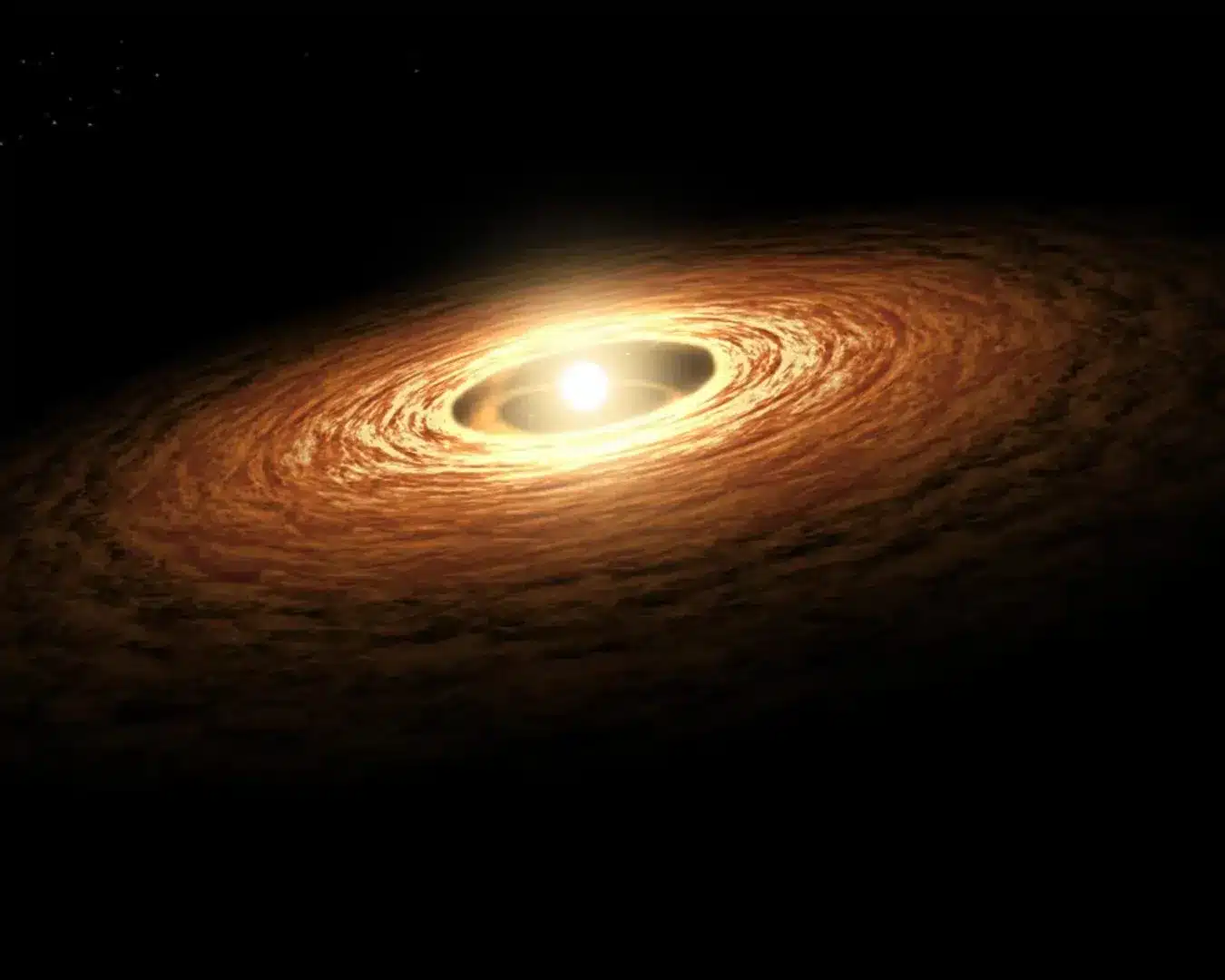About Protoplanetary Disk
- A protoplanetary disk is a disk of gas (99% by mass) and dust (1%), orbiting a newly formed star, from which planets may eventually form or be in the process of forming.
- Disks are common by-products of star formation, and range in mass from 0.001 to 0.3 Solar masses (1027–1029 kg) and in size from several tens to almost 1,000 Astronomical Units (1012–1014 m).
- How are they formed?
- Stars form from cold interstellar molecular clouds. A molecular cloud is an interstellar cloud of gas and dust in which molecules can form, the most common of which is hydrogen (H2).
- As they collapse into protostars under the force of gravity, the remaining matter forms a spinning disk.
- Eventually, the star stops accreting matter, leaving the disk in orbit around it.
- The leftover gas and dust inside that protoplanetary disk become the ingredients for planet formation.
- Organic molecules present in the original molecular cloud become part of the protoplanetary disk and the planets that form from it.
- The chemical composition of the protoplanetary disk determines the composition of the eventual planets that form from it.
- Protoplanetary disks typically disperse after 2–3 million years through the coalescence of their matter into planets and photoevaporation by the stellar radiation.
Q1) What is the James Webb Space Telescope (JWST)?
JWST was built in collaboration between NASA, the European Space Agency (ESA), and the Canadian Space Agency. It was launched in December 2021. It is the largest and most powerful space telescope to date. It orbits around a point in space called the L2 Lagrange point (a gravitationally stable location in space). It is approximately 1.5 million km beyond Earth’s orbit and is one of the five points in the orbital plane of the Earth-Sun system. It will focus on four main areas: the first light in the universe, the assembly of galaxies in the early universe, the birth of stars and protoplanetary systems, andplanets (including the origins of life).
Last updated on December, 2025
→ Check out the latest UPSC Syllabus 2026 here.
→ Join Vajiram & Ravi’s Interview Guidance Programme for expert help to crack your final UPSC stage.
→ UPSC Mains Result 2025 is now out.
→ UPSC Notification 2026 is scheduled to be released on January 14, 2026.
→ UPSC Calendar 2026 is released on 15th May, 2025.
→ The UPSC Vacancy 2025 were released 1129, out of which 979 were for UPSC CSE and remaining 150 are for UPSC IFoS.
→ UPSC Prelims 2026 will be conducted on 24th May, 2026 & UPSC Mains 2026 will be conducted on 21st August 2026.
→ The UPSC Selection Process is of 3 stages-Prelims, Mains and Interview.
→ UPSC Result 2024 is released with latest UPSC Marksheet 2024. Check Now!
→ UPSC Prelims Result 2025 is out now for the CSE held on 25 May 2025.
→ UPSC Toppers List 2024 is released now. Shakti Dubey is UPSC AIR 1 2024 Topper.
→ UPSC Prelims Question Paper 2025 and Unofficial Prelims Answer Key 2025 are available now.
→ UPSC Mains Question Paper 2025 is out for Essay, GS 1, 2, 3 & GS 4.
→ UPSC Mains Indian Language Question Paper 2025 is now out.
→ UPSC Mains Optional Question Paper 2025 is now out.
→ Also check Best IAS Coaching in Delhi

















